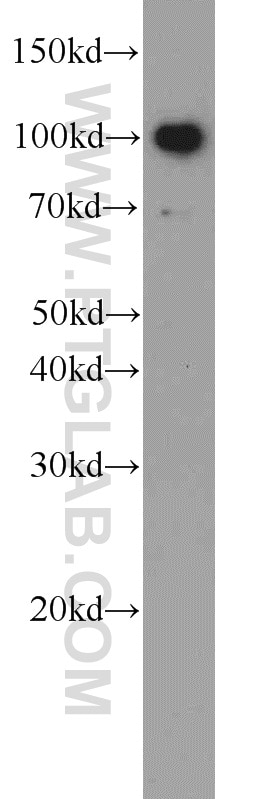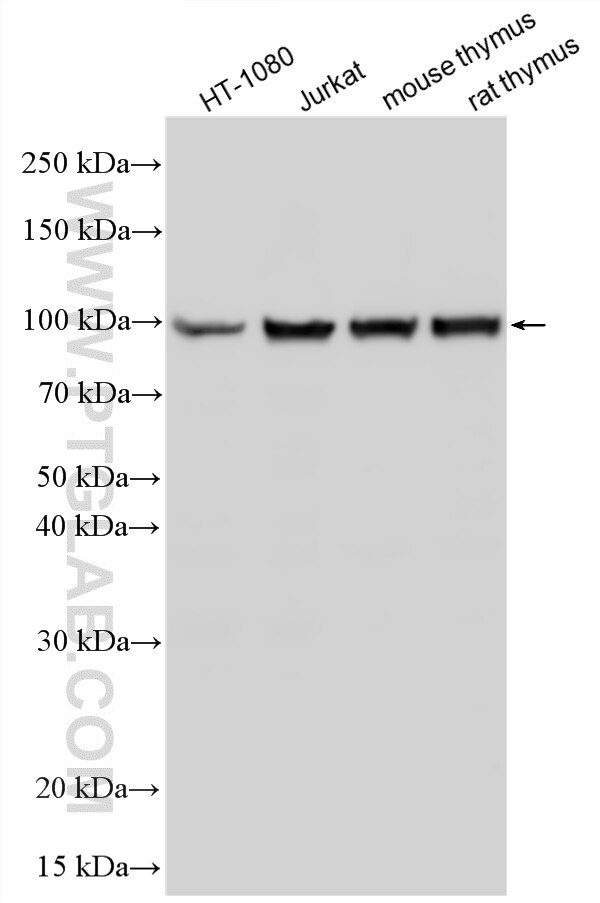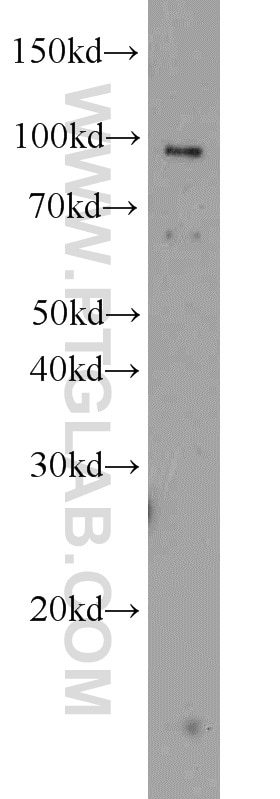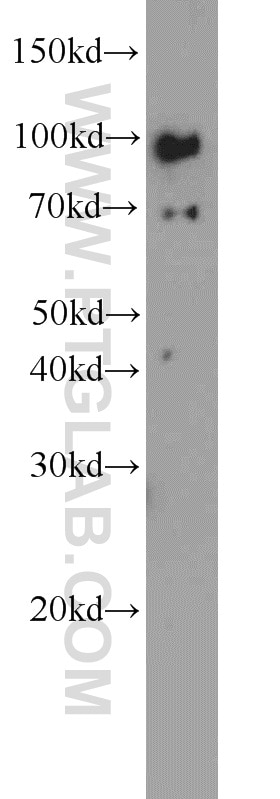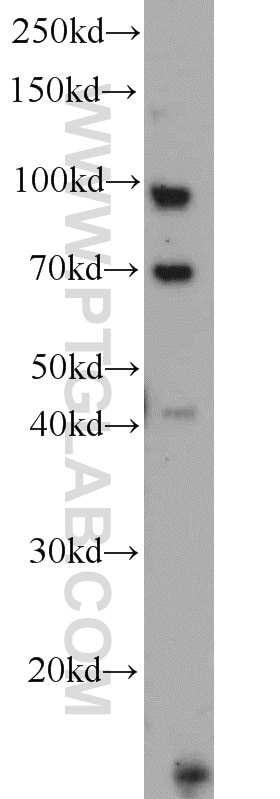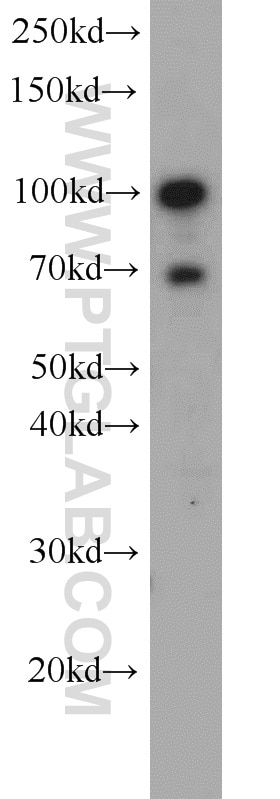- Phare
- Validé par KD/KO
Anticorps Polyclonal de lapin anti-TLR6
TLR6 Polyclonal Antibody for WB, ELISA
Hôte / Isotype
Lapin / IgG
Réactivité testée
Humain, rat, souris
Applications
WB, ELISA
Conjugaison
Non conjugué
N° de cat : 22240-1-AP
Synonymes
Galerie de données de validation
Applications testées
| Résultats positifs en WB | cellules RAW 264.7, cellules HT-1080, cellules Jurkat, tissu cérébral humain, tissu de thymus de rat, tissu de thymus de souris |
Dilution recommandée
| Application | Dilution |
|---|---|
| Western Blot (WB) | WB : 1:500-1:2000 |
| It is recommended that this reagent should be titrated in each testing system to obtain optimal results. | |
| Sample-dependent, check data in validation data gallery | |
Applications publiées
| KD/KO | See 1 publications below |
| WB | See 9 publications below |
Informations sur le produit
22240-1-AP cible TLR6 dans les applications de WB, ELISA et montre une réactivité avec des échantillons Humain, rat, souris
| Réactivité | Humain, rat, souris |
| Réactivité citée | rat, Humain, souris |
| Hôte / Isotype | Lapin / IgG |
| Clonalité | Polyclonal |
| Type | Anticorps |
| Immunogène | TLR6 Protéine recombinante Ag17686 |
| Nom complet | toll-like receptor 6 |
| Masse moléculaire calculée | 480 aa, 56 kDa |
| Poids moléculaire observé | 95-110 kDa |
| Numéro d’acquisition GenBank | BC111755 |
| Symbole du gène | TLR6 |
| Identification du gène (NCBI) | 10333 |
| Conjugaison | Non conjugué |
| Forme | Liquide |
| Méthode de purification | Purification par affinité contre l'antigène |
| Tampon de stockage | PBS with 0.02% sodium azide and 50% glycerol |
| Conditions de stockage | Stocker à -20°C. Stable pendant un an après l'expédition. L'aliquotage n'est pas nécessaire pour le stockage à -20oC Les 20ul contiennent 0,1% de BSA. |
Informations générales
TLR6, also known as CD286, belongs to the Toll-like receptor (TLR) family, which is important in the innate immune response to pathogens. TLRs are highly conserved from Drosophila to humans and share structural and functional similarities. TLR6 can form a heterodimer with TLR2. TLR6 and TLR2 are recruited to the macrophage phagosome, where they recognize peptidoglycan, a Gram-positive pathogen component (PMID: 11095740). TLR6 interacts with CD36, following CD36 stimulation by oxLDL or amyloid-beta 42, and forms a heterodimer with TLR4. The trimeric complex is internalized and triggers an inflammatory response.
Protocole
| Product Specific Protocols | |
|---|---|
| WB protocol for TLR6 antibody 22240-1-AP | Download protocol |
| Standard Protocols | |
|---|---|
| Click here to view our Standard Protocols |
Publications
| Species | Application | Title |
|---|---|---|
ACS Nano Biomimetic Nanomedicine-Triggered in Situ Vaccination for Innate and Adaptive Immunity Activations for Bacterial Osteomyelitis Treatment. | ||
BMC Med HBeAg mediates inflammatory functions of macrophages by TLR2 contributing to hepatic fibrosis.
| ||
J Med Chem Design, Synthesis, and Structure-Activity Relationship of N-Aryl-N'-(thiophen-2-yl)thiourea Derivatives as Novel and Specific Human TLR1/2 Agonists for Potential Cancer Immunotherapy. | ||
Bioorg Chem Synthesis, evaluation and molecular dynamics study of human toll-like receptor 2/6 specific monoacyl lipopeptides as candidate immunostimulants | ||
J Gerontol A Biol Sci Med Sci METTL3 promotes nucleus pulposus cell senescence in intervertebral disc degeneration by regulating TLR2 m6A methylation and gut microbiota | ||
Eur J Med Chem Structure-activity relationship study and biological evaluation of SAC-Garlic acid conjugates as novel anti-inflammatory agents. |
